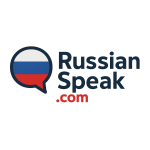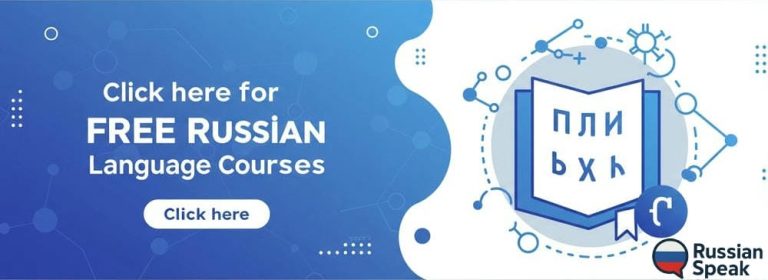Maneuvering the landscape of advertising and marketing in Russia requires a firm grasp of essential vocabulary. Key terms like “целевой аудитории” and “сегментация рынка” are fundamental for targeting specific consumer groups. Furthermore, understanding the nuances of digital marketing phrases, such as “поисковая оптимизация,” can greatly enhance campaign effectiveness. As brands endeavor to connect authentically with Russian consumers, the importance of culturally relevant language becomes increasingly apparent. What strategies can marketers employ to further bridge this gap?
Table of Contents
ToggleThe Basics of Advertising and Marketing in Russian

Advertising (реклама — reklama [rʲɪˈklamə]) and marketing (маркетинг — marketing [ˈmarkʲɪtʲɪŋ]) form the foundation of commercial activity, significantly influencing consumer behavior and shaping market trends.
Features of the Russian Market
In the Russian commercial environment, understanding the basics of advertising and marketing is especially important for success. The Russian market is characterized by its cultural specificity, historical background, and unique consumer habits. Effective advertising strategies must take these nuances into account to build trust and interest among the audience.
For example, honesty and openness in advertising are traditionally valued in Russia, along with creating an emotional connection to the product or brand. Using national symbols, local celebrities, and cultural codes can greatly enhance the effectiveness of advertising messages.
Evolution of Marketing Trends
Marketing trends in Russia are constantly evolving under the influence of social changes, technological progress, and globalization. In recent years, there has been significant growth in digital marketing (цифровой маркетинг — tsifrovoy marketing [tsɨˈfrovɐj ˈmarkʲɪtʲɪŋ]) — including social media, content marketing, targeted ads, and data analytics.
Additionally, omnichannel marketing (омниканальный маркетинг — omnikanalny marketing [omnʲɪkɐˈnalnɨj ˈmarkʲɪtʲɪŋ]) is steadily developing, combining offline and online channels to create a seamless customer experience. Russian companies actively implement new technologies like artificial intelligence and big data to better understand customer needs.
Importance of Visual and Narrative Styles
The ability to communicate product value through bold visuals (визуальные образы — vizualnye obrazy [vʲɪˈzualʲnɨjɪ ˈobrəzɨ]) and compelling storytelling (рассказ — rasskaz [rɐˈskaz]) is key to attracting attention and building brand loyalty (лояльность к бренду — loyal’nost k brendu [lɐˈjalʲnəsʲtʲ k ˈbrʲendʊ]). Storytelling is becoming an increasingly popular tool in Russia, allowing brands to create emotional bonds with consumers and stand out from competitors.
High-quality design (дизайн — dizayn [dɪˈzajn]), thoughtful creativity (креативность — kreativnost’ [krʲɪatʲɪvˈnostʲ]), and localization of content make advertising more memorable and effective.
Practical Importance
A deep understanding of advertising and marketing fundamentals gives companies and professionals the freedom to innovate and engage authentically with their audiences. Mastering the language of marketing (язык маркетинга — yazyk marketinga [jɪˈzɨk ˈmarkʲɪtʲɪŋə]) in Russian opens access to a vast market with its own unique opportunities and challenges.
Ultimately, successful promotion of products and services in Russia requires not only technical knowledge but also sensitivity to the country’s cultural, economic, and social aspects.
Thus, knowing the basics of advertising and marketing in the Russian context is an essential skill for effective business operations and building long-term customer relationships.
Key Terms for Market Research
Market research is the backbone of successful marketing efforts. It provides crucial insights into how consumers behave, what they prefer, and what new trends are developing in the marketplace. These insights help companies make smarter decisions about how to reach and connect with their customers.
Two key concepts in market research are “target audience” and “market segmentation.” Understanding these terms is essential for creating marketing strategies that work.
Target audience (целевая аудитория, tselevaya auditoriya) refers to the specific group of people a company wants to reach with its products, services, or advertising. Knowing your target audience means understanding who they are — their age, gender, interests, needs, and habits. This knowledge allows marketers to craft messages that speak directly to that group, increasing the chances that the message will be noticed and acted upon.
For example, a company selling sports shoes might identify its target audience as young adults aged 18-30 who enjoy fitness and outdoor activities. By focusing on this group, the company can create advertisements that highlight features important to them, like comfort and durability.
Market segmentation (сегментация рынка, segmentatsiya rynka) is the process of dividing a large market into smaller groups based on shared characteristics. This helps businesses focus their marketing efforts more precisely and use resources more effectively. Segmentation can be done using several types of criteria:
- Demographics (демография, demografiya): Age, gender, income, education level, occupation.
- Psychographics (психографика, psikhografika): Lifestyle, values, personality traits.
- Geographics (география, geografiya): Location such as country, city, or climate zone.
- Behavioral factors (поведенческие факторы, povedencheskiye faktory): Purchasing habits, brand loyalty, product usage.
By analyzing these factors, companies can identify groups with similar needs and tailor their products or marketing messages accordingly. For example, a company might discover a segment of environmentally conscious consumers and develop eco-friendly products specifically for them.
Market segmentation improves marketing efficiency by:
- Allowing for personalized communication tailored to each segment.
- Helping prioritize the most profitable or promising segments.
- Reducing wasted spending on broad campaigns that reach uninterested audiences.
In summary, market research uses concepts like target audience and market segmentation to understand consumers better. This understanding helps businesses design marketing strategies that connect with the right people in the right way, increasing success and customer satisfaction.
Key Russian terms:
- Target audience — целевая аудитория (tselevaya auditoriya)
- Market segmentation — сегментация рынка (segmentatsiya rynka)
- Demographics — демография (demografiya)
- Psychographics — психографика (psikhografika)
- Behavioral factors — поведенческие факторы (povedencheskiye faktory)
These words are useful for discussing market research concepts when working with Russian speakers or studying marketing in Russian.
Understanding Advertising Channels
When learning Russian, it is useful to explore vocabulary and phrases related to advertising channels. This topic helps learners understand how businesses promote their products or services, which is common in both everyday life and business contexts.
Advertising Channels in Russian
Advertising channels (рекламные каналы) refer to the different ways companies communicate with potential customers. Here are some common types of advertising channels and related Russian terms:
| Cyrillic | English Phonetic | English Definition |
|---|---|---|
| телевидение | televideniye | television |
| радио | radio | radio |
| печатная реклама | pechatnaya reklama | print advertising (newspapers, magazines) |
| интернет-реклама | internet-reklama | internet advertising |
| социальные сети | sotsialnye seti | social networks / social media |
| наружная реклама | naruzhnaya reklama | outdoor advertising (billboards, posters) |
| мобильная реклама | mobilnaya reklama | mobile advertising |
| прямая почтовая рассылка | pryamaia pochtovaia rassylka | direct mail |
| маркетинг влияния | marketing vliyaniya | influencer marketing |
Explanation and Examples
- Телевидение (Television)
- Television advertising reaches a wide audience.
- Example: Реклама по телевидению часто вызывает сильные эмоции.
(“Advertising on television often evokes strong emotions.”)
- Интернет-реклама (Internet Advertising)
- Online ads allow brands to target specific groups using data analytics.
- Example: Интернет-реклама позволяет точно нацеливаться на нужную аудиторию.
(“Internet advertising allows precise targeting of the desired audience.”)
- Социальные сети (Social Networks)
- Social media platforms provide interactive engagement with customers.
- Example: Маркетинг в социальных сетях помогает компаниям взаимодействовать с клиентами.
(“Marketing in social networks helps companies interact with customers.”)
- Наружная реклама (Outdoor Advertising)
- Billboards and posters are visible to people in public spaces.
- Example: Наружная реклама часто расположена в местах с большим трафиком.
(“Outdoor advertising is often located in high-traffic areas.”)
Useful Phrases for Advertising Context
- Рекламная кампания (reklamnaya kampaniya) — advertising campaign
- Целевая аудитория (tselevaya auditoriya) — target audience
- Бренд (brend) — brand
- Сообщение (soobshcheniye) — message
- Маркетинговая стратегия (marketingovaya strategiya) — marketing strategy
- Анализ данных (analiz dannykh) — data analysis
This vocabulary will help English speakers better understand discussions about advertising channels in Russian, improving their comprehension of marketing materials and business conversations related to advertising.
Essential Vocabulary for Digital Marketing
In today’s digital age, having a strong grasp of digital marketing vocabulary is crucial for any brand aiming to connect effectively with its target audience. Understanding these key terms not only helps marketers craft more strategic campaigns but also allows them to adapt quickly to the fast-changing landscape of online marketing.
SEO (Search Engine Optimization) – Поисковая оптимизация
SEO involves a variety of techniques designed to improve a website’s visibility in search engine results pages (SERPs). This includes optimizing website content, improving site structure, and building backlinks. The goal is to increase organic (non-paid) traffic by ranking higher for relevant search queries. Effective SEO leads to increased brand awareness and more qualified leads without direct advertising costs.
PPC (Pay-Per-Click) – Оплата за клик
PPC is an advertising model where advertisers pay a fee each time their ad receives a click. It’s commonly used on platforms like Google Ads and social media networks. PPC allows precise targeting based on demographics, interests, and search intent, making it a powerful tool for driving immediate traffic. Unlike SEO, PPC delivers faster results but requires ongoing investment.
Content Marketing – Контент-маркетинг
Content marketing focuses on creating and distributing valuable, relevant, and consistent content that attracts and retains a clearly defined audience. This can include blog posts, videos, infographics, podcasts, and social media updates. Quality content builds trust and authority, encourages engagement, and supports SEO efforts by providing material that search engines can index.
Engagement Rate – Уровень вовлеченности
Engagement rate is a key performance metric that measures how actively an audience interacts with content. This includes likes, shares, comments, clicks, and other forms of interaction relative to the total number of followers or viewers. High engagement signals that content resonates well with the audience, helping brands build relationships and community.
Additional Important Terms in Digital Marketing
- Conversion Rate – Коэффициент конверсии: The percentage of users who take a desired action (e.g., making a purchase or filling out a form) after interacting with marketing content.
- Impressions – Показы: The number of times an ad or piece of content is displayed, regardless of clicks.
- CTR (Click-Through Rate) – Кликабельность: The ratio of users who click on an ad or link compared to the number of impressions.
- Bounce Rate – Показатель отказов: The percentage of visitors who leave a website after viewing only one page.
- Lead Generation – Генерация лидов: Strategies aimed at capturing potential customers’ contact information for follow-up.
By mastering these terms and their practical applications, marketers can design more effective campaigns, optimize budgets, and better analyze results. This knowledge forms the foundation for success in digital marketing, helping brands stand out in a crowded online marketplace.
![]()
Crafting Effective Campaigns: A Glossary
Crafting effective campaigns requires a nuanced understanding of terminology that informs strategy and execution.
Key Campaign Concepts
- Value Proposition (Ценностное предложение)
This is the unique benefit your product or service offers to customers. It answers the question: “Why should someone choose this over competitors?”
Example: “Our app saves you 30 minutes daily, making your life easier.”
In Russian: “Наше приложение экономит вам 30 минут в день, делая жизнь проще.” - Call to Action (Призыв к действию)
This is a prompt encouraging the audience to take a specific step, like buying, signing up, or clicking a link.
Example: “Sign up now for a free trial!”
In Russian: “Подпишитесь сейчас на бесплатный пробный период!” - Customer Journey (Путь клиента)
This describes the stages a customer goes through from first learning about your brand to making a purchase and beyond. Mapping this journey helps create targeted messages at each stage.
Example stages: Awareness → Consideration → Purchase → Loyalty. - Target Demographic (Целевая аудитория)
The specific group of people your campaign aims to reach, defined by factors like age, gender, interests, or location. - Engagement (Вовлечение)
The interaction between the audience and your campaign, such as likes, shares, comments, or purchases.
Related Russian Terms for Campaigns
| Russian (Cyrillic) | Pronunciation | English Definition |
|---|---|---|
| Кампания | Kampaniya | Campaign |
| Стратегия | Strategiya | Strategy |
| Ценностное предложение | Tsennostnoye predlozheniye | Value proposition |
| Призыв к действию | Prizyv k deystviyu | Call to action |
| Путь клиента | Put’ kliyenta | Customer journey |
| Целевая аудитория | Tselevaia auditoriya | Target demographic |
| Вовлечение | Vovlecheniye | Engagement |
| Контент | Kontent | Content |
| Социальные сети | Sotsial’nyye seti | Social networks |
| Аналитика | Analitika | Analytics |
| Конверсия | Konversiya | Conversion |
| Реклама | Reklama | Advertisement |
Knowing these terms helps English speakers learning Russian better understand marketing discussions and materials. It also allows them to create or analyze campaigns with more confidence and clarity in a bilingual setting.
A well-crafted campaign, enriched with the right terminology, can liberate brands, enabling them to connect authentically with their audience.
Consumer Behavior and Engagement Terms

Understanding consumer behavior is crucial for marketers aiming to create meaningful customer engagement and build long-term loyalty. By carefully studying how consumers think, feel, and act in relation to products and brands, businesses can craft marketing strategies that truly meet customer needs and preferences.
Key Concepts and Their Significance
1. Consumer Engagement (Потребительская вовлечённость)
Consumer engagement refers to the depth of interaction, emotional connection, and active involvement a customer has with a brand or product. It is much more than a simple purchase; it includes activities like:
- Participating in social media conversations
- Writing reviews and testimonials
- Sharing content related to the brand
- Advocating for the brand within their networks
Highly engaged consumers are valuable because they tend to exhibit loyalty, make repeat purchases, and recommend the brand to others, which drives organic growth. Engagement builds a two-way relationship where customers feel valued and heard.
2. Touchpoints (Точки взаимодействия)
Touchpoints are all the instances and channels through which consumers encounter a brand. These can be physical or digital, such as:
- Retail stores
- Brand websites and mobile apps
- Social media platforms (Facebook, Instagram, TikTok)
- Advertising campaigns (TV, online, print)
- Customer support interactions (calls, chats, emails)
- Events and sponsorships
Each touchpoint is an opportunity to influence customer perceptions and satisfaction. Consistent and positive experiences across all touchpoints lead to a seamless customer journey. Managing these touchpoints well requires coordination across different departments within a company.
3. Customer Journey (Путь клиента)
The customer journey refers to the complete sequence of experiences a consumer has with a brand—from the initial awareness stage through consideration, purchase, usage, and post-purchase activities such as feedback or support. Understanding this journey helps marketers identify key moments where customers might face challenges or require encouragement.
Mapping the customer journey allows companies to:
- Personalize communication tailored to each stage
- Allocate resources more effectively
- Improve retention rates by addressing pain points early
- Enhance overall customer satisfaction
This strategic approach ensures that marketing efforts are aligned with real consumer behavior patterns.
4. Feedback Loop (Цикл обратной связи)
A feedback loop is a structured process for collecting and using customer opinions, complaints, suggestions, or compliments. Feedback can be gathered via:
- Surveys and questionnaires
- Online reviews and ratings
- Social media comments and messages
- Direct communication with customer service
By analyzing this feedback, companies can improve their products, refine marketing messages, and enhance service quality. A strong feedback loop demonstrates that a company values its customers’ voices, which helps build trust and strengthens loyalty.
Why These Concepts Matter
Mastering these concepts allows marketers to develop strategies that resonate authentically with their audience. Today’s consumers value brands that respect their individuality and freedom of choice (личная свобода и выбор). Instead of simply pushing sales, companies that focus on genuine engagement create lasting relationships that foster loyalty and brand advocacy.
A few additional points of interest:
- Research shows engaged consumers spend up to 60% more time on brand websites and are five times more likely to make a purchase.
- Touchpoints should be designed to reflect brand values consistently; inconsistency can confuse customers and reduce trust.
- The customer journey is rarely linear; many consumers cycle between stages multiple times before making decisions.
- Feedback loops that are fast, transparent, and responsive tend to increase customer satisfaction significantly.
In summary, understanding consumer engagement (вовлечённость), managing touchpoints (точки взаимодействия) effectively, mapping the customer journey (путь клиента), and maintaining robust feedback loops (цикл обратной связи) form the foundation of successful marketing strategies in today’s competitive environment—one where personal freedom and choice are highly valued by consumers.
Focusing on these areas helps marketers connect with their target audiences in meaningful ways, encouraging not just purchases but also deep, enduring loyalty that sustains the brand over time.
Cultural Considerations in Russian Marketing Language
Understanding cultural nuances is essential for creating effective marketing language in Russia because these subtleties shape how messages are understood and accepted by Russian consumers. Russia has a unique cultural background with deep historical roots, specific social values, and rich traditions that influence communication styles and consumer behavior.
Language Adaptation and Cultural Relevance
To engage the Russian market successfully, brands must adapt their language to reflect local customs, values, and expectations. This is more than just translating words; it involves conveying meaning in a way that resonates emotionally and culturally. For example, Russian consumers tend to appreciate sincerity (искренность, [iskrennost’]) and respect for tradition (традиции, [traditsii]). Marketing messages that acknowledge these elements tend to be received positively.
Humor, Symbolism, and Emotional Expression
Humor in Russia often differs from Western styles. Russian humor can be more ironic or sarcastic (сарказм, [sarkazm]), sometimes darker and more subtle. Overly literal or simplistic jokes may not work well. Marketers should be aware of these differences to avoid misunderstandings.
Symbolism also carries weight in Russia. For example, certain colors like red (красный, [krasnyy]) have historical and patriotic significance, linked to the Soviet era and national pride. Using these symbols thoughtfully can evoke strong emotional responses. Conversely, foreign symbols or concepts may not have the same impact or could confuse the audience.
Emotional expression in Russian culture tends to be more reserved in public but can be intense and heartfelt in private or close relationships. Marketing language that balances warmth with respect is more effective than overly casual or flamboyant tones.![]()
Historical and Folklore References
References to Russian history (история, [istoriya]) and folklore (фольклор, [folklor]) often create a powerful connection with audiences. For example, mentioning famous literary figures like Pushkin or folklore heroes such as Baba Yaga can trigger feelings of national pride and cultural identity. However, marketers must use these references accurately and sensitively to avoid seeming disrespectful or superficial.
Practical Tips for Marketers
- Conduct deep cultural research (культурное исследование, [kul’turnoye issledovaniye]) before launching any campaign.
- Use language that reflects respect (уважение, [uvazheniye]) for traditions and social values.
- Avoid literal translations; focus on meaning and emotional impact.
- Incorporate culturally significant symbols and colors carefully.
- Understand the local sense of humor and avoid jokes that might offend or confuse.
- Test campaigns with native speakers to ensure naturalness and appropriateness.
Building Trust and Brand Loyalty
By integrating cultural nuances into marketing language, companies build trust (доверие, [doveriye]) with Russian consumers. Trust leads to stronger brand loyalty (лояльность к бренду, [loyal’nost’ k brendu]) because customers feel understood and respected. This connection is crucial in a competitive market where consumers have many options but tend to favor brands that speak their cultural language authentically.
In summary, Russian marketing language requires careful attention to cultural details such as humor, symbolism, history, and emotional tone. Successful brands take the time to adapt their messages thoughtfully, creating campaigns that feel local rather than foreign. This approach not only improves communication but also forms deeper relationships with consumers, helping companies grow in the Russian market.
Multiple Choice Questions on Advertising and Marketing Vocabulary in Russian
1. What is the Russian term for “target audience,” and what does it mean?
a) сегментация рынка (segmentatsiya rynka) — dividing a market into smaller groups
b) целевая аудитория (tselevaya auditoriya) — a specific group of people a company wants to reach
c) анализ данных (analiz dannykh) — data analysis
Correct answer:
b) целевая аудитория (tselevaya auditoriya) — a specific group of people a company wants to reach
2. Which Russian phrase corresponds to “Search Engine Optimization” and what is its main purpose?
a) маркетинг влияния (marketing vliyaniya) — influencer marketing
b) поисковая оптимизация (poiskovaya optimizatsiya) — improving website visibility in search engines
c) уровень вовлечённости (uroven’ vovlechennosti) — engagement rate
Correct answer:
b) поисковая оптимизация (poiskovaya optimizatsiya) — improving website visibility in search engines
3. What is the meaning of “призыв к действию” (prizyv k deystviyu) in marketing campaigns?
a) Value proposition — the unique benefit a product offers
b) Call to action — a prompt encouraging the audience to take a specific step
c) Customer journey — the stages a customer goes through from awareness to purchase
Correct answer:
b) Call to action — a prompt encouraging the audience to take a specific step
Frequently Asked Questions
What Are the Differences Between Advertising and Marketing in Russian?
The differences between advertising (реклама) and marketing (маркетинг) in Russian reflect their distinct roles in business. Реклама (pronounced “re-KLA-ma”) means advertising, which focuses specifically on promoting a product or service. It is about creating messages that attract customers’ attention, like TV commercials, posters, or online ads. For example, a slogan like «Купи сейчас!» (“Buy now!”) is typical in реклама.
Маркетинг (pronounced “mar-ke-TEENG”) is a broader concept. It includes research to understand customers’ needs, planning how to position a brand in the market, and deciding on pricing and distribution. Маркетинг influences the whole process of how a company connects with its audience, not just the ads. For instance, a маркетолог (marketer) might analyze why customers prefer one product over another or develop strategies to improve customer loyalty.
In summary, реклама is one part of маркетинг. Think of маркетинг as the full plan to reach and satisfy customers, and реклама as the tool used to communicate that plan through specific messages. This distinction is important when learning Russian business vocabulary because these words are often used in different contexts.
How Can I Improve My Russian Marketing Vocabulary?
To improve Russian marketing vocabulary, one must focus on expanding vocabulary through practical exercises. Engaging with diverse materials, practicing conversations, and consistent exposure to industry language can greatly enhance understanding and fluency, fostering greater freedom in communication.
![]()
Are There Regional Variations in Russian Marketing Language?
Regional dialects in Russian marketing language exhibit significant variations influenced by cultural nuances. Understanding these differences is essential for effective communication, as they reflect the diverse values and preferences of various communities across the country.
How Can I Apply These Terms in Real-Life Marketing Scenarios?
Understanding marketing terminology allows for effective communication in real-world applications. By utilizing practical examples, marketers can craft compelling strategies, enhancing engagement and driving success. Mastery of language fosters creativity and empowers brands to resonate with diverse audiences.



